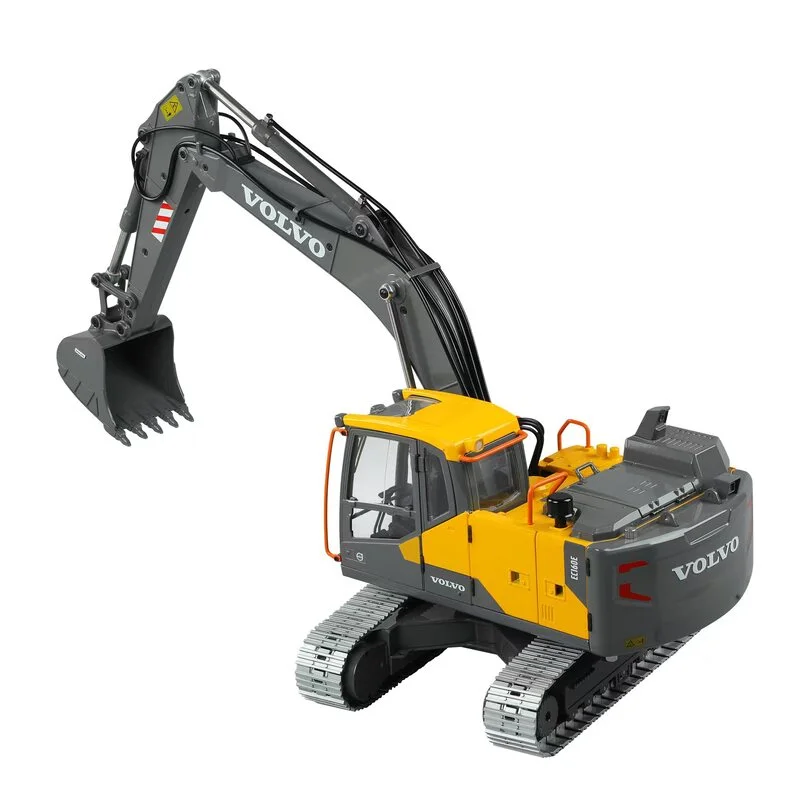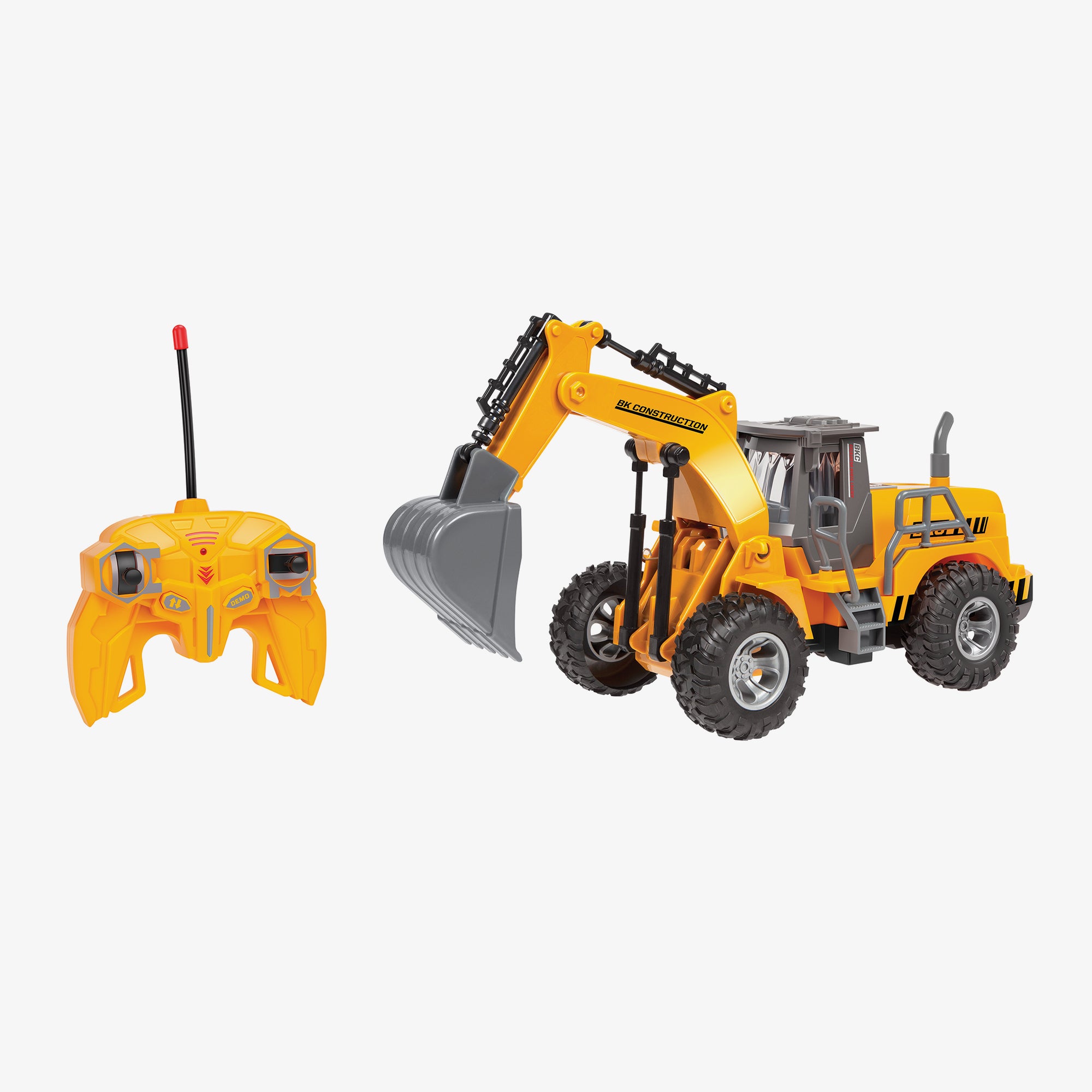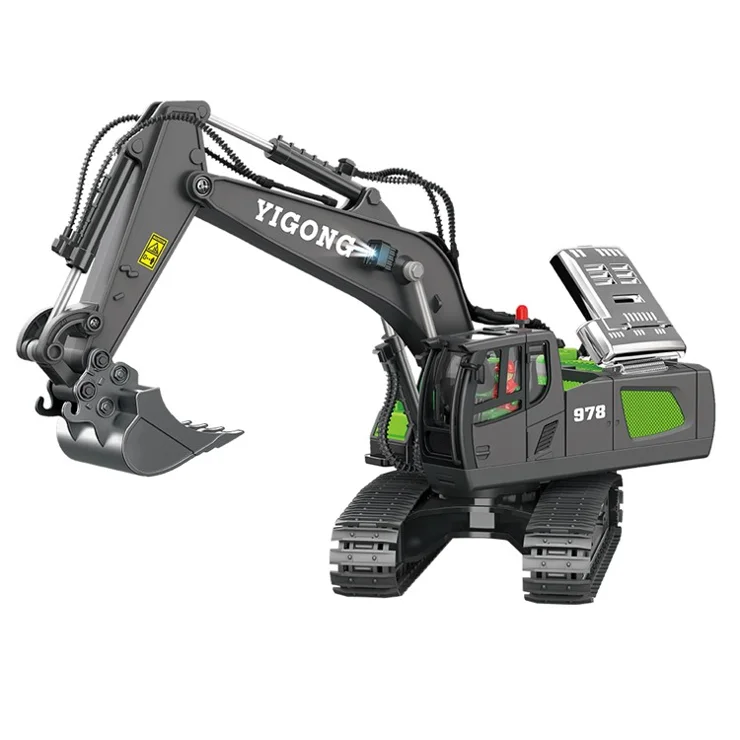The Crucial Functions of Excavator That Make Things a Must-Have Tool
Excavators are indispensable in the construction and landscaping markets. Their functional attachments enable a variety of tasks, from digging to demolition. Additionally, they boast remarkable excavating depth and reach, powered by durable engines. Driver convenience and small designs improve functionality in numerous settings. Nevertheless, what absolutely establishes excavators apart are their advanced hydraulic systems and longevity. Recognizing these functions can clear up why they are taken into consideration necessary devices on any job website.
Versatile Attachments for Improved Capability
Excavators are powerful equipments on their own, the enhancement of functional accessories greatly boosts their capability. These attachments transform a typical excavator into a multi-purpose tool, suitable for a range of jobs. Containers, for example, can be found in different forms and dimensions, enabling drivers to dig, scoop, and relocate products effectively. Hydraulic thumbs can be included for boosted gripping and handling of bulky items, such as logs or rocks.Furthermore, specialized accessories like augers and breakers permit drilling and demolition job, increasing the excavator's energy on building and construction sites. remote control excavator. Grapples are an additional choice, perfect for relocating and sorting debris. This versatility not just raises performance however additionally lowers the need for multiple devices, saving time and expenses. By equipping excavators with the ideal add-ons, drivers can take on varied projects, making them vital in the building market
Superior Excavating Depth and Get To
Excavators are designed with remarkable excavating deepness and reach, allowing them to navigate in limited spaces and gain access to hard-to-reach locations. This ability is critical for numerous building and excavation jobs, where standard machinery may fail. With flexible boom arms and extendable tracks, excavators can quickly navigate irregular terrain while keeping stability.The digging depth can differ significantly among models, frequently varying from 10 to 25 feet, relying on the design and function. This attribute makes it possible for drivers to dig deep into foundations, trenches, and other deep frameworks successfully. Furthermore, the reach of an excavator enables for exact excavating and product handling without repositioning the maker regularly, conserving time and labor costs.Ultimately, the exceptional excavating depth and reach of excavators make them essential for professionals looking for to complete intricate tasks with accuracy and efficiency. Their versatility boosts efficiency on job sites, showcasing them as a crucial tool in contemporary building.
Powerful Engine Performance

When it comes to performance and efficiency on building and construction sites, effective engine efficiency plays an essential duty in the abilities of an excavator. A durable engine creates significant horsepower, permitting the device to tackle durable jobs effortlessly - remote control excavator. This strength equates right into faster cycle times, enabling drivers to total projects more quickly.Additionally, powerful engines offer the needed torque to manage difficult terrains and differed tons, guaranteeing that the excavator can perform successfully under various problems. Whether it is lifting, excavating, or relocating materials, the engine's performance directly influences the general functional effectiveness of the machine.Furthermore, advancements in engine technology have led to boosted fuel effectiveness, decreasing functional costs while preserving power result. Inevitably, the engine's efficiency offers as the foundation of an excavator, verifying its standing as a vital device in the building industry
Advanced Hydraulic Systems

Enhanced Lifting Ability
A considerable improvement in lifting ability can be attributed to innovative hydraulic systems located in contemporary excavators. These systems use high-pressure liquid to generate greater pressure, enabling drivers to raise larger loads effortlessly. The design behind these hydraulics warranties peak performance, offering an impressive power-to-weight ratio that boosts overall effectiveness. Therefore, excavators can deal with demanding tasks, such as lifting huge materials or tools, without endangering stability. Additionally, the robust design of hydraulic parts adds to boosted sturdiness and dependability, making them suitable for numerous building and construction environments. This enhanced lifting ability not just lowers the time needed for jobs however also minimizes the requirement for extra machinery, showing crucial for both productivity and cost-effectiveness in the building and construction industry.
Improved Precision Control
Although conventional excavators commonly fought with precision, contemporary hydraulic systems have transformed control mechanisms, enabling drivers to perform jobs with impressive accuracy. These sophisticated systems make use of symmetrical control valves that enable smoother and more responsive activities, substantially minimizing the margin for error. Operators can currently carefully tune the excavator's activities, making it less complicated to browse tight spaces click for source and manage fragile materials. Boosted responses systems additionally inform operators of real-time performance, guaranteeing excellent sychronisation in between the device and operator. This boosted precision not just boosts efficiency however likewise boosts safety on work websites, lessening the risk of mishaps. Therefore, modern-day excavators furnished with sophisticated hydraulic systems are invaluable devices for construction and excavation jobs requiring careful accuracy.
Driver Comfort and Visibility
Operator comfort and visibility are vital components in the design of contemporary excavators (remote control excavator). Functions such as ergonomic seat style, boosted presence alternatives, and effective control formats significantly boost the operator's experience and performance. Focusing on these elements guarantees that drivers can work successfully and safely in various problems
Ergonomic Seat Design
Convenience and visibility are vital in excavator style, with the ergonomic seat playing a vital function in enhancing the driver's experience. An ergonomic seat is crafted to support the driver's body, reducing exhaustion throughout lengthy hours of operation. Flexible features, such as seat elevation, back-rest angle, and back assistance, accommodate private choices and advertise suitable position. These changes enhance convenience and allow the driver to maintain focus on jobs without pain. Furthermore, a well-designed seat can provide much better side assistance, permitting smoother handling when the excavator is in operation. This thoughtful style not only enhances efficiency however also adds to total security, making sure that operators can execute their duties properly and successfully.
Boosted Exposure Functions
The layout of an excavator prolongs past just the seat, with improved visibility features playing a considerable role in operator comfort and general safety and security. Large home windows and purposefully located mirrors supply drivers with a clear view of their surroundings, decreasing dead spots. This style consideration permits for far better spatial recognition, which is necessary in busy workplace. Furthermore, numerous excavators include rearview cams and progressed surveillance systems that aid operators in navigating limited rooms. The integration of these presence features not only advertises safety and security but likewise lowers driver tiredness by enabling simpler monitoring of workplace. Eventually, boosted presence contributes to a lot more efficient procedures and assists ensure that excavators can perform their jobs properly and safely.
Control Design Effectiveness
While maneuvering complex job sites, an effective control design substantially enhances both driver comfort and visibility. A well-designed control configuration guarantees that drivers can access essential functions with marginal initiative, minimizing exhaustion during lengthy hours. Ergonomic joystick placements and resource instinctive button arrangements permit smooth procedure, enabling drivers to preserve emphasis on the task available. In addition, clear exposure of both the workplace and the control panel is important for security and accuracy. Modern excavators commonly incorporate flexible seating and control setups to accommodate numerous driver choices, even more enhancing comfort. Inevitably, a thoughtfully created control layout not just improves performance however also fosters a much safer working setting by allowing drivers to react quickly to transforming problems.
Compact Design for Urban Environments
As city building and construction sites typically deal with area restrictions, a compact layout ends up being vital for excavators operating in these environments. These machines are crafted to navigate tight areas, enabling efficient maneuverability in crowded job websites. A minimized footprint allows them to function very closely to existing structures, minimizing disruption and making best use of productivity.The compact layout often includes shorter tracks and a tighter transforming span, promoting procedure in slim streets and restricted locations. Lightweight materials add to relieve of transport, making it easier to move the excavator from one place to one more within the urban landscape.Additionally, several small excavators are furnished with features such as extendable arms and versatile add-ons, improving their performance while keeping a small size. This adaptability allows drivers to deal with a variety of tasks, from digging to demolition, all while fitting effortlessly right into the restraints of city settings.

Resilience and Upkeep Considerations
Resilience stands as an important consider the efficiency and durability of excavators, specifically sought after city settings. These makers undergo extensive problems, consisting of varying soil types, severe temperatures, and high-frequency use. High-quality products and robust building and construction are needed for making sure that excavators can withstand these obstacles without compromising functionality.Regular upkeep is just as essential in protecting sturdiness. Scheduled assessments, timely oil changes, and the replacement of worn components add substantially to an excavator's lifespan. Operators has to also take note of hydraulic systems, tracks, and undercarriages, as these components often birth the burden of wear and tear.Investing in durable excavators with substantial upkeep plans enhances dependability and decreases downtime, inevitably resulting in boosted efficiency on construction websites. Therefore, comprehending the interplay in between sturdiness and upkeep is important for anyone thinking about the purchase of an excavator for urban projects.
Regularly Asked Concerns
How Do Excavators Compare to Other Building And Construction Equipment?
Excavators stand apart amongst building and construction tools as a result of their versatility, enabling jobs such as lifting, grading, and excavating. Contrasted to others, their hydraulic abilities use better performance and power, making them indispensable on numerous work sites.
What Security Includes Are Consisted Of in Modern Excavators?
Modern excavators incorporate different security features, consisting of rollover protection systems, alarm systems, and advanced presence enhancements. These aspects interact to minimize risks, ensuring operator safety while boosting effectiveness on building websites and various other demanding environments.

Can Excavators Be Used in Winter Issues?
Excavators can undoubtedly be utilized in winter season conditions, provided they are equipped with suitable winter season attachments and precautions are taken. Appropriate upkeep and adjustments improve their performance, making certain efficient procedure despite tough climate conditions.
What Is the Average Life-span of an Excavator?
The average life-span of an excavator normally ranges from 7,000 to 10,000 hours of operation. This period can greatly depend on upkeep techniques, running conditions, and the particular design's longevity and style functions.
Exactly how Do I Select the Right Excavator Dimension for My Task?
Choosing the right excavator dimension involves reviewing project range, website conditions, and material types. Think about aspects like reach, depth demands, and weight capacity to guarantee maximum performance and safety and security throughout procedure. Size matters considerably in task success. Additionally, the reach of an excavator enables for accurate excavating and product handling without repositioning the equipment regularly, saving time and labor costs.Ultimately, the premium excavating depth and reach of excavators make them important for specialists looking for to complete complicated tasks with precision and performance. Convenience and presence are vital in excavator layout, with the ergonomic seat playing a necessary function in improving the navigate to these guys driver's experience. The design of an excavator prolongs past just the seat, with improved exposure attributes playing a significant function in operator convenience and general safety and security. Modern excavators commonly incorporate adjustable seats and control setups to fit different operator choices, better boosting convenience. Light-weight materials contribute to reduce of transport, making it simpler to move the excavator from one location to one more within the metropolitan landscape.Additionally, numerous small excavators are furnished with functions such as extendable arms and functional attachments, improving their functionality while keeping a tiny size.